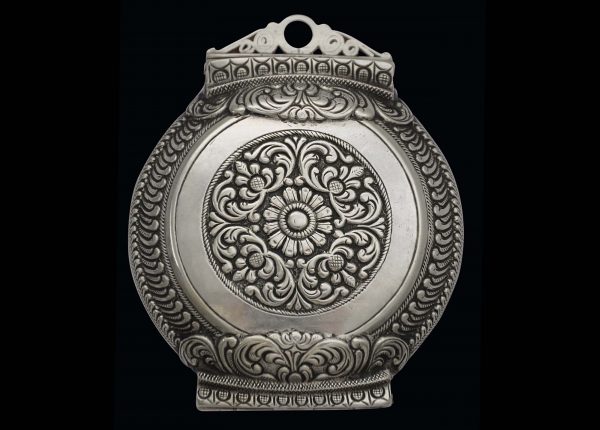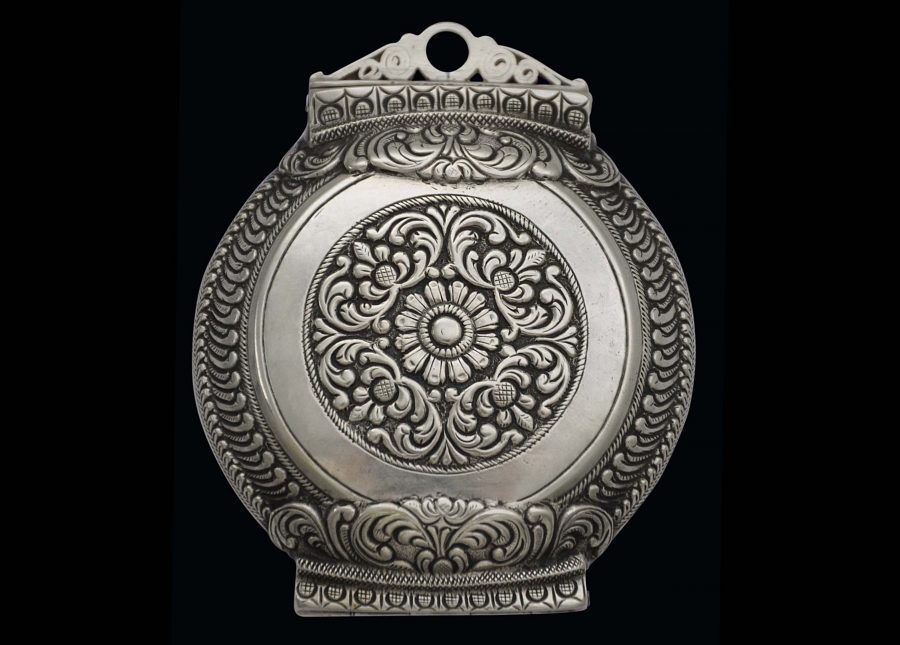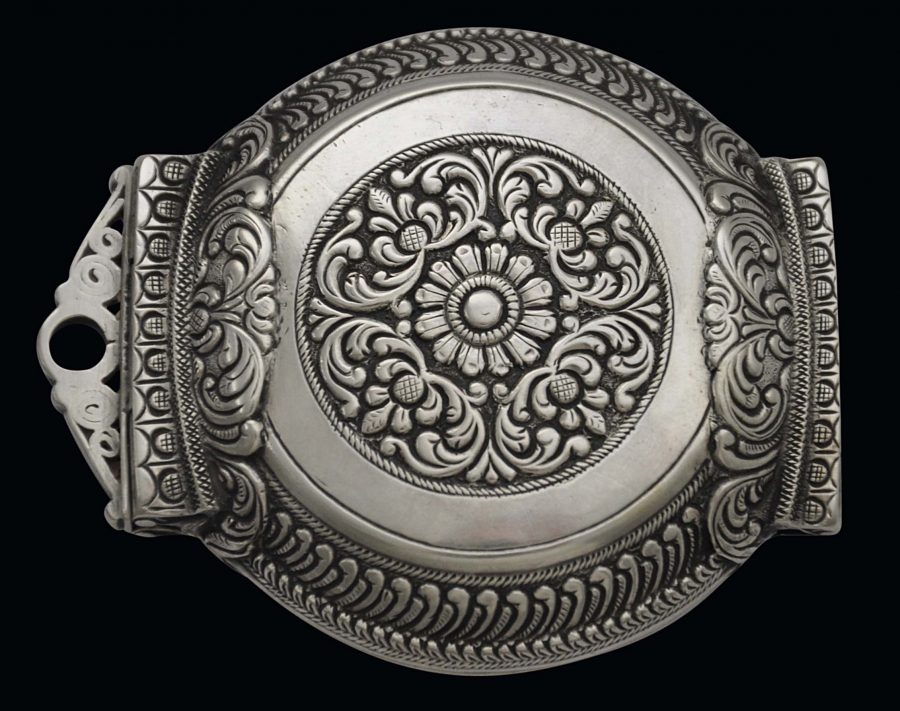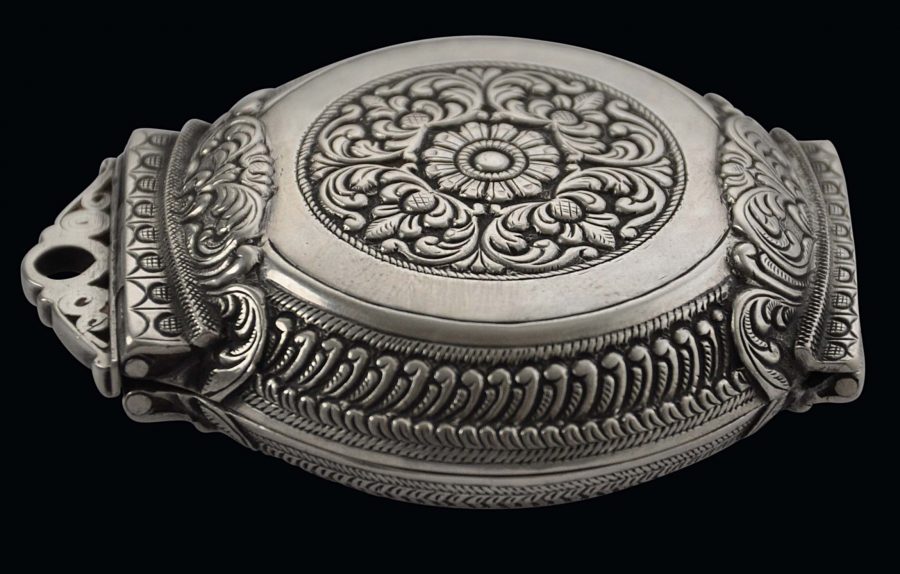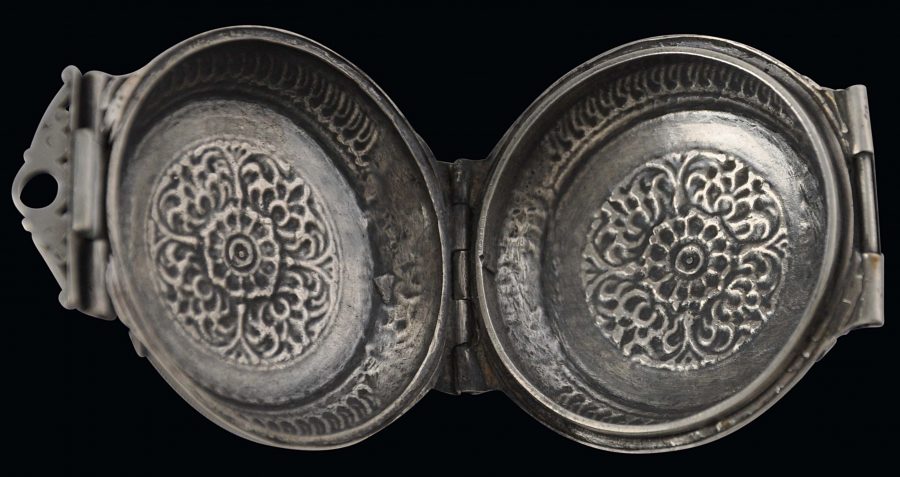This silver box of round, flattened form was used to hold and carry lime (chunam) for mixing with sliced areca nut for betel chewing and was known in Sri Lanka as a killotaya. It is finely decorated with scrolling flower and petal motifs.
Most killotayas were made of brass or copper. This example being made of finely chased silver was probably commissioned by a member of one of Kandy’s aristocratic families.
The box flips open to reveal the contents; it has hinges on one side. The form is reminiscent of, and almost certainly based on, a European gentleman’s pocket watch case, and like a watch case would have been held in a pocket or cloth fold.
A silver lime box of similar dimensions and form is in the Clive Collection at Powis Castle, Wales. Importantly for dating purposes, the Powis box is documented in the collection of Robert Clive, Baron Clive of Plassey (‘Clive of India’) from 1775, suggesting that our example might also be 18th century.
The example here is in near-perfect condition. The walls are thick and the item is heavy for its size: the silver was not economised on. It also closes tightly.
References
Brownrigg, H., Betel Cutters from the Samuel Eilenberg Collection, Thames & Hudson, 1992.
Coomaraswamy, A.K., Mediaeval Sinhalese Art, Pantheon Books, 1956 reprint of the 1908 edition.
Treasures from India: The Clive Collection at Powis Castle, The National Trust, 1987.


